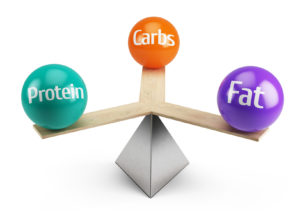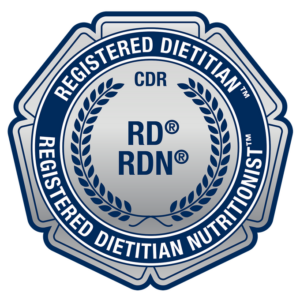If your social media feed is like mine, it is overloaded with diet buzz words. Keto, intermittent fasting, macros, what does it mean? How do you decide which one is right for you? What if I told you, your body tells you. Are you listening?
First, understand that most diets include a restriction of calories in order to achieve quick weight loss. Many diets have recycled throughout my career, but one thing remains consistent, calorie restriction. What does it mean? First, pause. How many diets have you been on in your lifetime? What success have you had maintaining that diet? How does the word diet affect your mindset to make it a lifestyle?
This article will focus on 3 of the biggest buzz diets right now, Keto, Intermittent fasting and Macros. In addition to added suggestions and tips.
Intermittent Fasting – What does it mean?
 Most diets help achieve weight loss work by reducing the number of calories consumed. Intermittent fasting does the same thing, but in a different way. This way of eating significantly limits calories (requiring fasting) for certain durations of time (intermittently). While allowing little or no restrictions the rest of the time.
Most diets help achieve weight loss work by reducing the number of calories consumed. Intermittent fasting does the same thing, but in a different way. This way of eating significantly limits calories (requiring fasting) for certain durations of time (intermittently). While allowing little or no restrictions the rest of the time.
Intermittent fasting includes different plans that include schedules when to skip meals. Either daily, weekly or monthly. Here are a few different approaches:
- Time-restricted feeding – Eat during an 8-12 hour period every day.
- Alternate day fasting – Eat normal one day, but only a minimal amount (600 calories) the next day; alternating between “feast” days and “fast” days.
- 5:2 eating pattern – Consuming meals regularly for 5 days per week, then restricting to no more than 600 calories per day for the other 2 days. Drinking mostly water on those 2 days.
- Periodic fasting – Caloric intake is restricted for several consecutive days and unrestricted on all other days. For example, fasting for five straight days per month.
How does Intermittent Fasting Work?
Intermittent fasting promotes weight loss by limiting calories based on when you eat. After a 12-16 hour fasting state, the body shifts from using carbohydrates called glycogen towards fat reserves as an energy source. The metabolism shifts from a carbohydrate-burning state to a fat-burning state (keep in mind, protein converts to energy also). Ultimately, this metabolic state results in ketones. Ketones can help regulate insulin sensitivity, reduce inflammatory diseases like arthritis and could protect against age-related declines like Alzheimer’s. On the other hand, too many ketones may be harmful.
Nutrition Tips for Intermittent Fasting
Intermittent fasting can be hard to restrict eating for long periods of time, including days. If this becomes a lifestyle, you must consider how you balance your calorie intake during the “feast” time. Essential nutrients are still important for your body to perform, including lean protein, healthy fats, vegetable, whole grains. While limiting too many added sugars and refined grains.
Before you Start Intermittent Fasting
Prior to starting a “fast” and “feast” state, you should consider your health history. Consult with a healthcare professional on pattern of eating. Some conditions or medications require eating at certain times. For example, skipping meals can be dangerous for people with diabetes who need to eat regularly to maintain blood sugar levels. Especially if insulin is prescribed. People who are pregnant, breastfeeding or under the age of 18 should not fast. Athletes perform better with adequate glycogen stores; therefore, fasting may reduce performance. Lastly, after a fasting state, some people may overindulge during “feast” periods. Which defeats the purpose.
Keto Diet – Not Dorito – What Does it Mean?
 Is the Ketogenic (Keto) diet the new miracle for obesity or diabetes? The keto diet is buzzing lately, but in fact, it was first used as a medical diet almost 100 years ago to treat pediatric epilepsy. While there are some health benefits, it is considered a “medical diet” that should be discussed with a healthcare provider first. Start here to learn more.
Is the Ketogenic (Keto) diet the new miracle for obesity or diabetes? The keto diet is buzzing lately, but in fact, it was first used as a medical diet almost 100 years ago to treat pediatric epilepsy. While there are some health benefits, it is considered a “medical diet” that should be discussed with a healthcare provider first. Start here to learn more.
What is the Keto Diet?
The keto diet focuses on fat. Yes, very high fat diet. Fat is typically thought of as the second line of fuel. In the keto diet, fat becomes the first line of fuel over carbohydrates. When the low fat diet became popular 3-4 decades ago, this changed the ingredients in food. In the way of sugar, including hidden, refined sugar. This is not to be confused with high fiber, whole grain carbohydrates. The increase in sugar-sweetened foods and drinks have been associated with risks of obesity and diabetes.
How the Keto Diet Works?
The idea behind the Keto diet is to switch your body’s metabolism to a backup mode. Instead of using glucose (carbohydrate) as fuel, fat is used as the primary fuel. The body converts fat as the primary fuel similar to the process in intermittent fasting. This results in ketones which are produced in times of fasting. The organs, including brain, heart, muscles and kidneys use the ketones when you aren’t eating enough carbohydrates. It becomes a survival method and the body switches metabolism into ketosis, without fasting. Starting a Keto diet can result in a quick 10 pounds weight loss in 2 weeks. Before you get excited about the fast results, let’s examine the long term picture.
The Pros and Cons of the Keto Diet
Pros of Keto
- May help with insulin sensitivity, type 2 diabetes, excess weight and metabolic syndrome.
- May help with blood sugar regulation and triglycerides
- May improve brain health, such as epilepsy, dementia and ALS (amyotrophic lateral sclerosis.
- Improves satiety and reduces cravings
Cons of Keto
- “Keto flu” – nausea, vomiting, fatigue, dizziness, insomnia
- “Ketone” breath
- Long term sustainability is low
- Ketones long term could have a negative affect on the body, including the Kidneys and Liver
- Long term, Keto could increase blood LDL “bad” cholesterol if high levels of saturated fats are frequently eaten.
- Muscle cramps
- Risk of electrolyte imbalance and vitamin/mineral deficiencies
- Constipation
- Not recommended for people who have liver disorders, pancreatitis, disorders of fat metabolism or Type 1 Diabetes (insulin dependent)
What Does the Keto diet Mean in my Practice
First, I don’t call it a diet. Second, healthy fats are promoted for satiety, heart health, and anti-inflammatory benefits. Instead of fat being a primary source of fuel, it is balanced with Carbohydrate and Protein. So all food can be enjoyed. All while ensuring a balance of fiber, vitamins and minerals for the body to function!
You say Macros, I say Macronutrients – What Does that Mean?
They took a boring scientific word and transformed it into a trendy, fun word. Macronutrients (Macros) are the building blocks of nutrition. I often find in discussions that people say Macros, but don’t understand it.
What are Macros?
 The building blocks of nutrition. They provide the body fuel to function:
The building blocks of nutrition. They provide the body fuel to function:
- Carbohydrates- grains, cereals, rice, pasta, whole grains, legumes, fruit, dairy (except cheese), snack food, sweets, refined sugar
- Protein – meat, poultry, fish, pork, eggs, dairy (including cheese), legumes, some nuts/seeds, soy products
- Fat – nuts/seeds, avocado, olives, oils, butter/margarine, creams, processed meats, grease
How are Macros used in a diet?
Well, they really aren’t a diet. Macros provide calories. The calculated Macro numbers are based on the calorie level or meal plan. If you know anyone with diabetes, you probably heard “I am counting carbohydrates.” In order to maintain level blood sugars.
Since the start of my career, meal plans are devised on Macro percentages. I personalize this distribution based on individual needs. The American Dietary Guidelines recommend:
- 45-65% Carbohydrates
- 10-30% Protein
- 25-35% Fat
How do I decide what a client needs? I listen to their goals. While taking into account their age, medical history and gender. In other words, I personalize it to their needs. Then I take it deeper and coach them to understand what is in food, not just the number.
If I Count Macros, I’m all Set…
Hold on a second. If you just focus on numbers, it will be similar to counting calories. Think about the apps that calculate for you. What happens when you hit your target numbers? Probably feel pretty good. Now think about the food that you ate. How did your body respond to the Macros you ate? Is your gut happy with how you balanced your macros? In other words, did you look beyond the numbers to listen to your body to fuel it with the right mix or Macro combination?
That is where working with a healthcare professional is beneficial. Someone who will guide you to the next level to fuel your body with the right Macro fuel mix.
Keto, Intermittent fasting, Macros – What’s the Best?
That’s just it! Following a “diet” plan should fit your lifestyle, work schedule, and family life. It’s personalized for your life! When you were growing up, did you ever hear a family member say “my diet starts tomorrow?” It was going to be the next greatest thing. How has that affected your mindset towards dieting or way of life. Are you always searching for the next best thing? Now pause, what message are you sending to your kids?
Now shift your mindset. Say to yourself “I’m going to listen to my body, provide it structure and the right fuel mix, that allows flexibility.” Really let that sink in.
This is a mindset shift that take practices. But, practice does not have to be perfect! Enjoy the food you love and let food work for you! Need some guidance, contact me for complimentary Get to Know You call.


